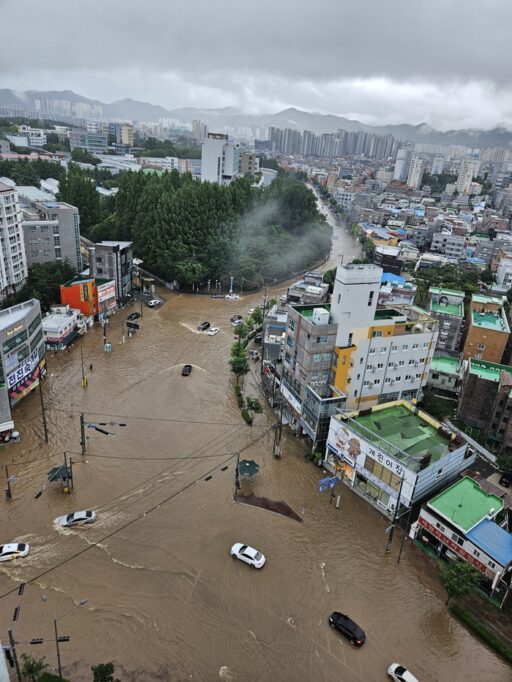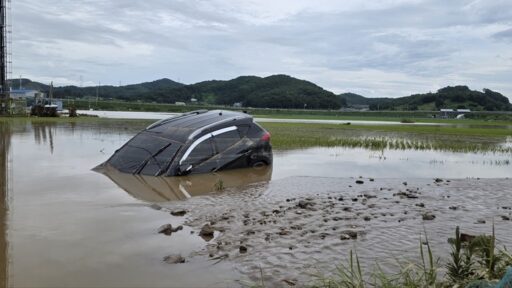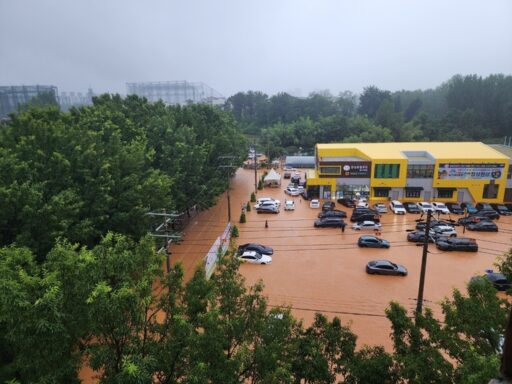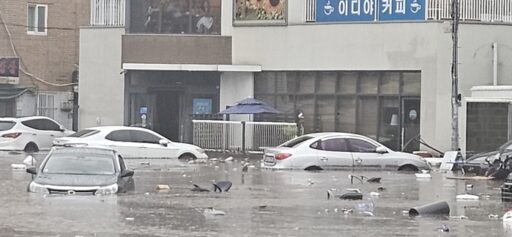**How to Deal with Flooded Vehicles during the Rainy Season and Important Considerations When Purchasing Used Cars**
As the damage from vehicle flooding due to heavy rains increases during the rainy season, interest is growing regarding the repair possibilities of flooded cars and methods for identifying flooded vehicles in the used car market.
Vehicle flooding can lead to serious damage, making proper responses critical. We will explore everything from how to handle a flooding situation, the likelihood of repairs, and how to identify flooded vehicles when purchasing used cars.

According to the automobile industry on the 21st, when driving in heavy rain, it is essential to strictly follow safety rules, including reducing speed and maintaining a safe distance to prevent traffic accidents.
Data from the Korea National Police Agency indicates that the fatality rate during rainy weather is approximately 1.3 times higher than on clear days.
In particular, when water begins to accumulate on the roads during heavy rain, it is fundamental to safety to detour around underpasses, low-lying areas, and frequent congestion spots with many traffic signals.
**Basic Safety for Driving**
**Dealing with Flooded Vehicles and Repair Possibilities**
For flooded vehicles, regardless of whether they are internal combustion or electric cars, it is crucial to have them towed to a repair shop as quickly as possible without starting the engine.

Many drivers make the mistake of trying to start the engine to check if the vehicle operates, but this can cause further damage and should be strictly avoided.
In the case of internal combustion vehicles, if the water rises above half the height of the tires and floods the engine compartment, repair costs can exceed the residual value of the vehicle, generally leading to a total loss and scrapping.
If the flooding damage is not severe, it is essential to change the engine oil, coolant, fuel, and to disconnect various wiring connectors, clean them thoroughly, and apply lubricant afterward.
Particularly for diesel vehicle owners, it is also necessary to check the diesel particulate filter (DPF). If the undercarriage is partially submerged, a DPF cleaning process to remove debris is needed.
For electric vehicles, avoid charging or directly handling high-voltage batteries and cables until it has been completely dried and inspected by a professional.

**How to Identify Flooded Vehicles in the Used Car Market**
History of flood-damaged vehicles can be checked on the "Car 365” site operated by the Ministry of Land, Infrastructure, and Transport and the Korea Transportation Safety Authority, or on the "Car History" site of the Korea Insurance Development Institute.
However, it may be difficult to confirm the history of flooded vehicles that have not gone through insurance claims, making it important to inspect the vehicle directly.
When inspecting the vehicle, check for signs of replacement on the ECU (Engine Control Unit) or electrical wires in the engine compartment, and look for mud stains or signs of corrosion around the trunk floor or fuse box.
You should also pull the seatbelt fully and check for foreign substances like mud or mold, and it would be wise to see if there is a musty smell when operating the air conditioning.
Sometimes, flooded vehicles may have only the seatbelts replaced with new ones, so comparing the manufacturing date marked on the seatbelt with the model year of the vehicle can also help determine if the vehicle has been flooded.

While the windows are down, shine a light between the glass seams to check for internal contaminants, and lift the floor mats to examine the condition of the underlying flooring.
If you need to purchase a used car immediately after heavy rain, it is safest to go through reputable large companies such as Encar or K Car.
These large firms operate programs that offer a 100% refund if a vehicle is determined to be flood-damaged, providing consumer protection.
Image sources: On the 17th, Shin-an-dong area in Buk-gu, Gwangju / Gwangju Buk-gu, reference photos for better understanding of the article / News1, On the 17th, roads and parking lots in Jeonnam Jangseong Local Food area / News1 (provided by the reader), On the 17th, Nogok-dong area in Buk-gu, Daegu / Daegu Buk-gu.


